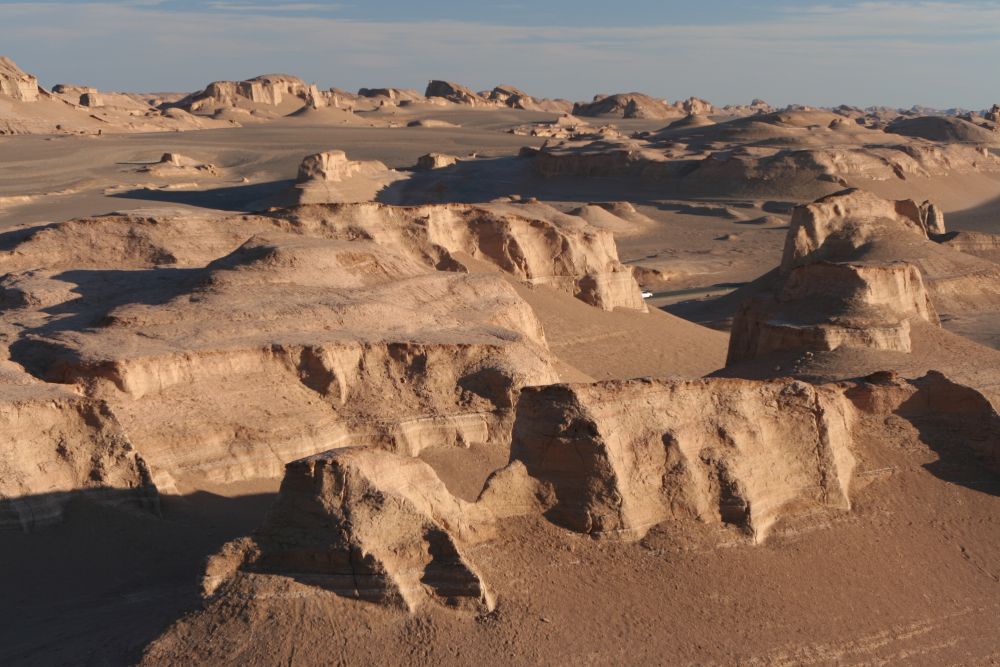
Sometimes, a setting sneaks up on you. It’s not the glittering castle or the misty forest that sparks the story, but a barren, blistering wasteland where the very ground might just crack open and swallow you whole.
The Lut Desert—Dasht-e Lut—is one of those places. Imagine a world where the earth reaches out to touch the sky with jagged rock formations and sand dunes that tower like ancient gods. The air is dry enough to parch the skin, and the ground bakes under a sun so relentless it has recorded the hottest surface temperature on the planet: a searing 159°F (70°C). Yet, as deadly as it is, there’s a haunting beauty here that tugs at the storyteller’s mind.
Iran’s Lut Desert is more than a place of extremes. It’s a monument to the passage of time, its sands swirling with the echoes of forgotten kingdoms and lost caravans. Rock formations rise like the bones of some colossal, extinct beast, their jagged edges softened by centuries of wind and sand. In a place where the day burns and the night freezes, one can almost hear the whispers of those who dared to cross this expanse—their stories hanging in the air like the dust that never settles.
It’s a land of contradictions. Friendly wolves roam the desert, as if the landscape itself wasn’t hostile enough. Sinkholes gape open like dark mouths, inviting you to peer down into the abyss. There are castles, half-buried in sand, standing as sentinels over nothing. And, at night, the stars blanket the sky in a way you only see in places where there’s no other light to compete. It’s the kind of sky that makes you feel small and immortal at once.
For me, this setting screams ‘story’ because it’s a land of extremes. Extremes pressure people. They push characters to their breaking points and beyond, twisting their morality and testing their endurance. What happens when a traveler is stranded in the Lut, the sun a hammer and the dunes a forge? What secrets might the sandstorms unearth—perhaps a buried city, or a lost love, or a ghostly memory?
And then there’s that nagging sense of history. The Lut is named for Lot, the prophet who fled Sodom and Gomorrah. You can almost feel his shadow lingering there, watching over a world that still burns, in a different way.
This is the kind of setting that slips into my notebook, a half-formed whisper of a scene, waiting for the right characters to stumble across it. Maybe one day, they will.

Tracy Cooper-Posey
SRP Author



